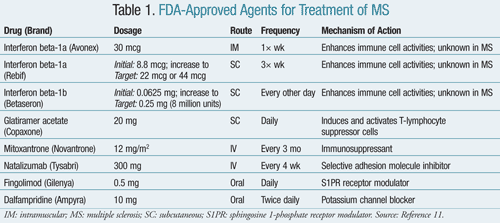Overview
"First Steps" is a short documentary created by Jason DaSilva in 2008 that documents his response to being diagnosed with multiple sclerosis and various ways that he has tried to cope with the disease. DaSilva was diagnosed with MS at the age of 26 when his career as a filmmaker was just beginning. "First Steps" depicts DaSilva's neurological symptoms: loss of balance, inability to walk, and blurred vision. His multiple sclerosis is a form called primary progressive MS which has no cure and no treatment. DaSilva struggles with continuing his love of filmaking due to the disease, claiming, "what kind of filmmaker can't see or walk properly".
DaSilva explains that he must use a cane to walk. In an effort to gain back his mobility, DaSilva visits a motion capture studio to determine which muscles he must strengthen in order to walk. He visits the gym regularly to strengthen his legs to avoid a complete disability. He also considers leg braces to stabilize his feet and hips, but they do little to help. DaSilva then goes to a hospital to work with experts who aid individuals with cerebral palsy. Of course, none of these methods can fully cure his condition.
To cope with the struggles of MS, DaSilva visits his mother who insists that he should consider those who are even less fortunate than himself. She gives an example of people living in shacks in Jakarta while DaSilva lives in a nice city. DaSilva thinks, "I'd be happy anywhere in Jakarta if I could walk".
DaSilva then visits an MS support group and feels out of place with all of the older, Caucasian attendees; Jason is of Goan descent and in his mid twenties.
The film closes with DaSilva attending a film festival in Dallas where he laments the fact that many films don't have disabled actors, simply actors portraying disabilities. There he meets actor Kumar Pallana who, at 90 years old, claims that DaSilva's disability is all in his head and with the proper exercises he can walk again. DaSilva tries the exercises, but his symptoms do not disappear.
Despite all his failed attempts to walk again DaSilva seems to have accepted MS and determinedly he claims, "whatever happens to me, I'm gonna keep making films".
DaSilva explains that he must use a cane to walk. In an effort to gain back his mobility, DaSilva visits a motion capture studio to determine which muscles he must strengthen in order to walk. He visits the gym regularly to strengthen his legs to avoid a complete disability. He also considers leg braces to stabilize his feet and hips, but they do little to help. DaSilva then goes to a hospital to work with experts who aid individuals with cerebral palsy. Of course, none of these methods can fully cure his condition.
| Jason DaSilva, director and screenwriter of "First Steps". |
DaSilva then visits an MS support group and feels out of place with all of the older, Caucasian attendees; Jason is of Goan descent and in his mid twenties.
The film closes with DaSilva attending a film festival in Dallas where he laments the fact that many films don't have disabled actors, simply actors portraying disabilities. There he meets actor Kumar Pallana who, at 90 years old, claims that DaSilva's disability is all in his head and with the proper exercises he can walk again. DaSilva tries the exercises, but his symptoms do not disappear.
Despite all his failed attempts to walk again DaSilva seems to have accepted MS and determinedly he claims, "whatever happens to me, I'm gonna keep making films".
My Thoughts
DaSilva's film, though short, gives valuable insight to the feelings of anxiousness or despair that MS sufferers might feel when they are first diagnosed. Onset of multiple sclerosis often occurs during young adulthood when someone still has a large portion of their life ahead of them. Their aspirations and visions for the future can seem lost, but DaSilva insists that multiple sclerosis does not have to be the end of his dreams.
DaSilva is young and full of life and determination. It is shocking to see someone like him using a cane. He even worries about leg braces ruining his fashion as any young person would. I think that many people assume that debilitating diseases are reserved for the elderly, but seeing how MS can affect a man in his 20's makes MS so much more devastating.
DaSilva focuses on unconventional treatments for multiple sclerosis since his form of the disease, PPMS has no medical cure. I would be curious to also see his interactions with physicians rather than just an orthotist and a physical therapist.
Overall the film offers an interesting inside perspective of multiple sclerosis that benefits from having the filmmaker as the patient. The documentary focuses on what someone with MS would want outside people to know rather than what a film crew thinks would make an interesting documentary.
DaSilva is young and full of life and determination. It is shocking to see someone like him using a cane. He even worries about leg braces ruining his fashion as any young person would. I think that many people assume that debilitating diseases are reserved for the elderly, but seeing how MS can affect a man in his 20's makes MS so much more devastating.
DaSilva focuses on unconventional treatments for multiple sclerosis since his form of the disease, PPMS has no medical cure. I would be curious to also see his interactions with physicians rather than just an orthotist and a physical therapist.
Overall the film offers an interesting inside perspective of multiple sclerosis that benefits from having the filmmaker as the patient. The documentary focuses on what someone with MS would want outside people to know rather than what a film crew thinks would make an interesting documentary.
References:
DaSilva, J. (Director & Producer). (2008). First Steps [Documentary].
Image Sources (in order of appearance):
"First Steps" by Jason DaSilva
http://www.newmobility.com/wp-content/uploads/2015/01/headshot.jpg









